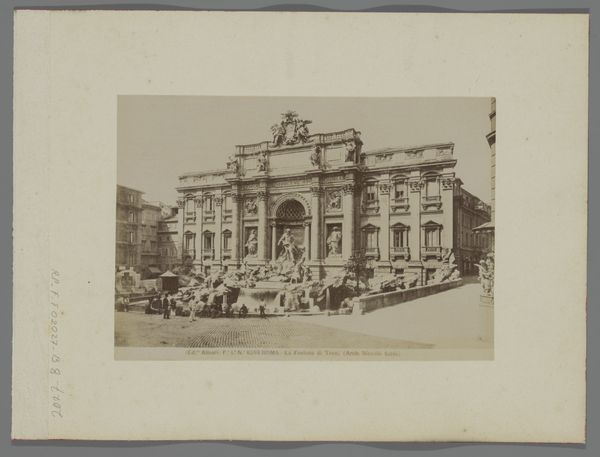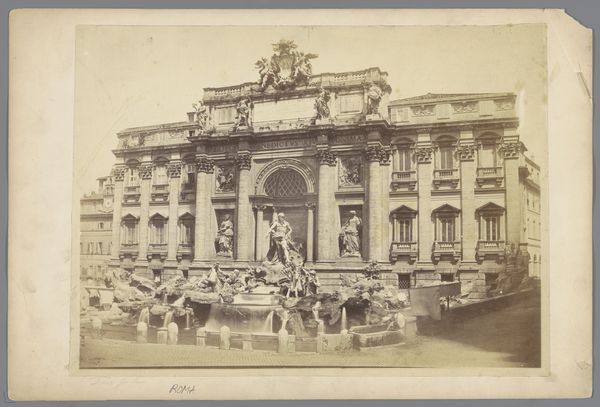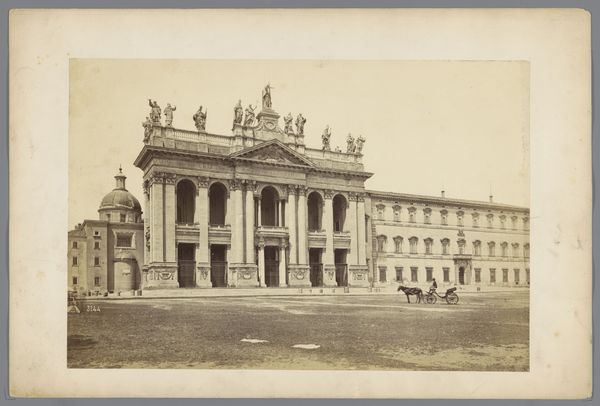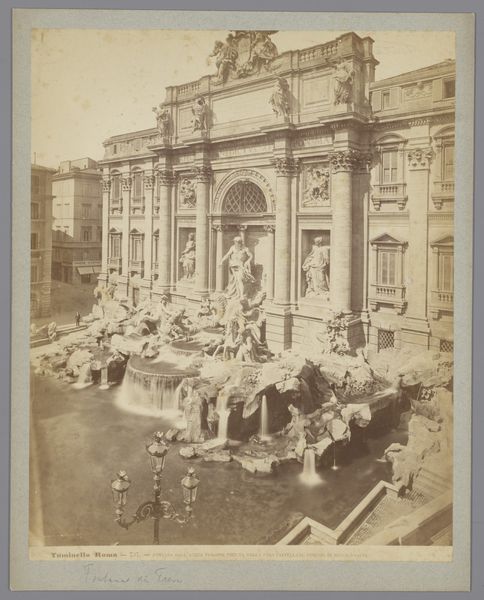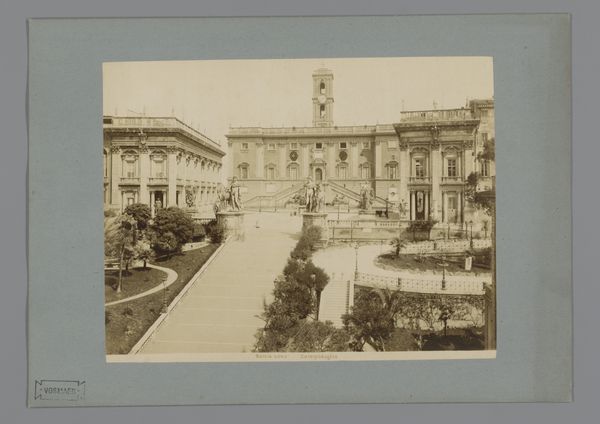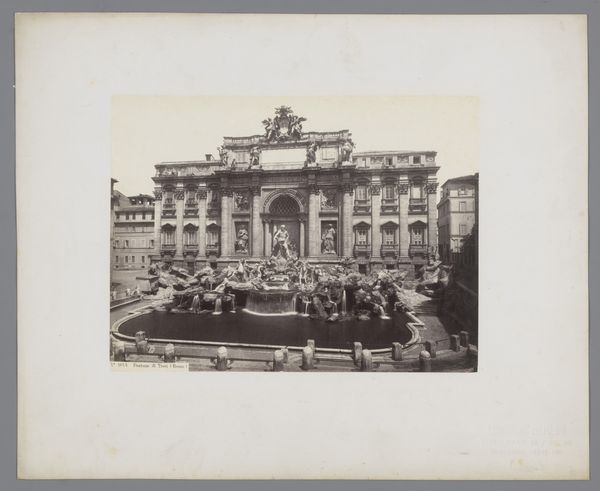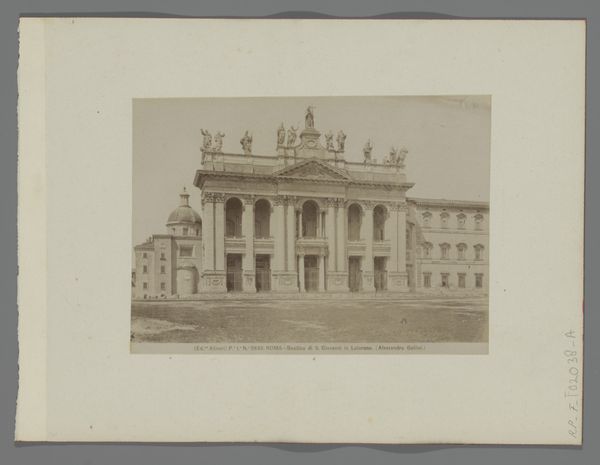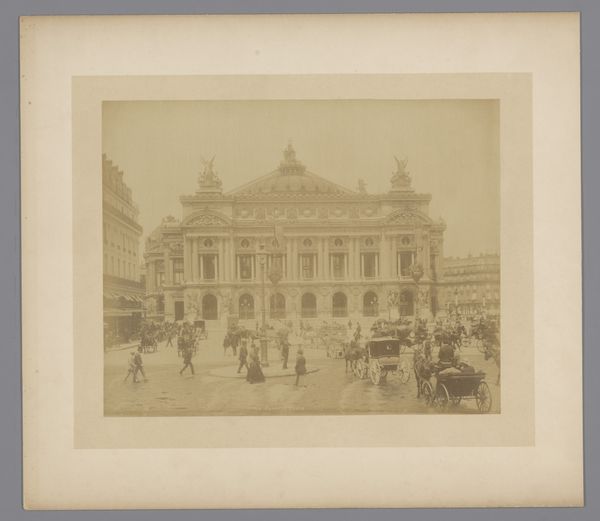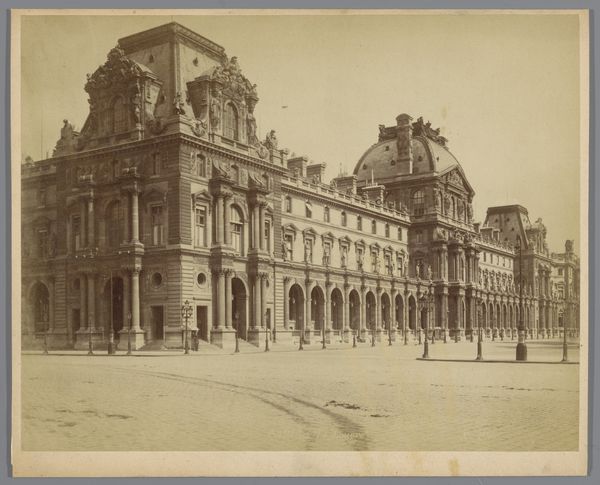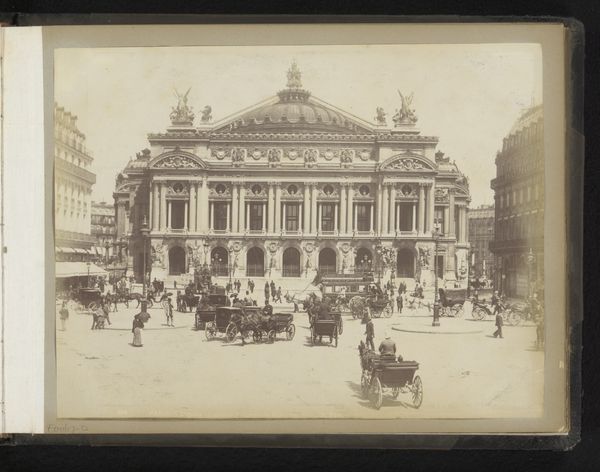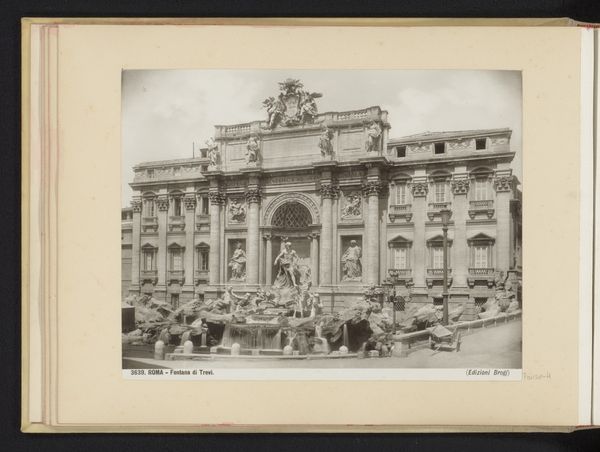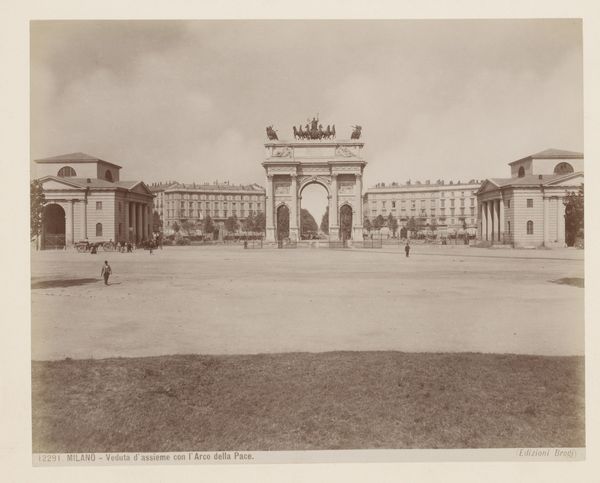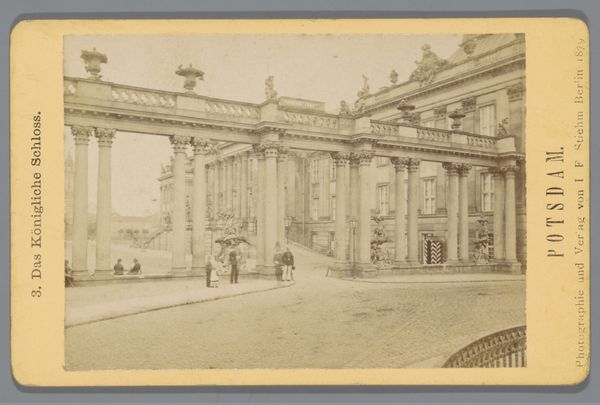
Dimensions: height 254 mm, width 355 mm
Copyright: Rijks Museum: Open Domain
Curator: Welcome to the Rijksmuseum. Today, we'll be looking at a 19th-century albumen print, titled "Trevifontein te Rome, Italië," an evocative image capturing the Trevi Fountain in Rome. Editor: My first impression is the photograph's stillness. Even with all that sculpted water, there's a kind of serene grandeur, like a captured memory of an ancient stage set. The monochromatic tones enhance the architectural details, almost ghostlike. Curator: Indeed, this albumen print, created sometime between 1851 and 1890 by an anonymous photographer, provides a fascinating glimpse into how cultural monuments were being documented and disseminated in the mid-19th century. This predates mass tourism as we know it, though seeing these images helped encourage mass pilgrimage across Europe. Editor: Look closely, and you’ll notice how Oceanus, that imposing figure in the central niche, dominates the entire composition. It speaks volumes about how Baroque sculptors envisioned the relationship between humans and the natural world. Notice, though, that his iconography blends older and newer influences: both classicized forms reminiscent of antiquity but also a bombastic self-confidence so particular to 17th and 18th century art. Curator: And let's not overlook how the architecture is rendered. The photographer carefully balances light and shadow, emphasizing the fountain’s integration within the urban landscape of Rome. Early photography's diffusion acted as advertising for architectural trends throughout Europe, but, equally, promoted a classical architectural legacy in national collective memories. Editor: The details draw the eye—the frolicking figures and seahorses and even the blurred human presences that seem oblivious to this aquatic explosion. One might say the architecture is the hero here, but to me the symbolic charge is that the viewer also becomes a hero within a symbolic performance by entering into a historical space of collective memory. Curator: That interplay is at the heart of why this photograph resonates. The fountain, designed by Nicola Salvi, was completed decades before this image was captured, yet the image helps re-stage its place in Roman identity at a period of Italian unification, functioning to place a modern Italian identity atop ancient and Renaissance legacies. Editor: It becomes more than just a record of place; it transforms into a mirror reflecting our continuing fascination with the eternal city. Even now. Curator: Exactly. So a humble albumen print tells a bigger story of urban representation and the ongoing process of creating and negotiating history. Editor: What I find most fascinating is how a piece seemingly so straightforward holds complex symbolic stories.
Comments
No comments
Be the first to comment and join the conversation on the ultimate creative platform.
